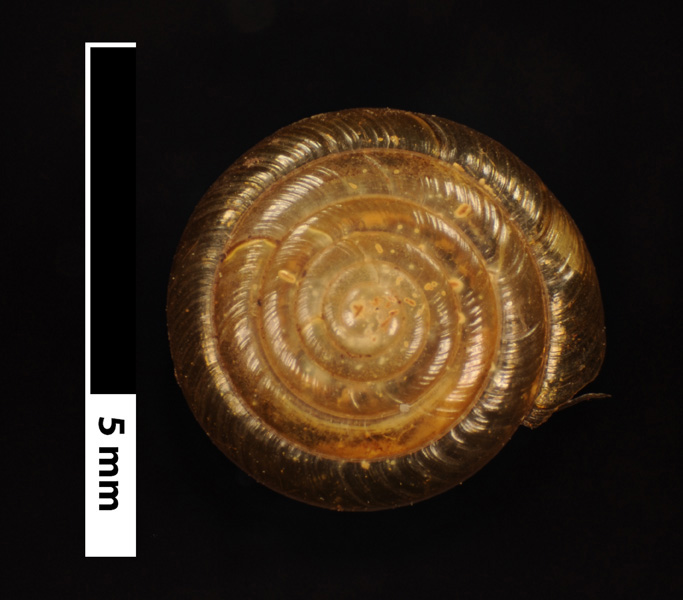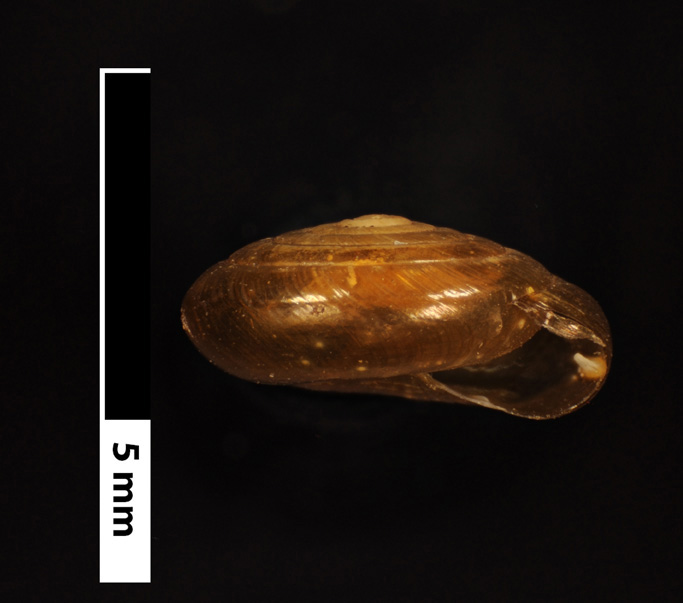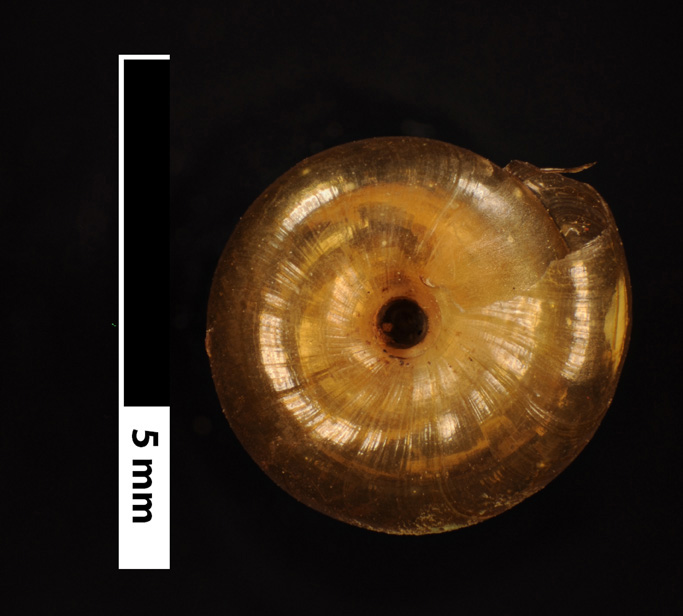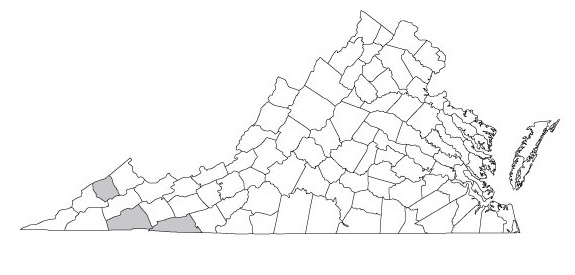Virginia Land Snails




Photo(s): Drawings of Ventridens coelaxis shells from Pilsbry (1946), with permission of the Academy of Natural Sciences of Philadelphia at Drexel University. Paralectotype shell images by Francisco Borrero/ANSP at Drexel University ©.
Click photo(s) to enlarge.
Ventridens coelaxis (Pilsbry, 1899)
Family: Gastrodontidae
Common name: Bidentate Dome
Identification
Width: 6.6 mm
Height: 3 mm
Whorls: 6.75
The shell of this animal is flatter in shape than many of its cousins’, with a lower apex. Its umbilicus is notably wide, narrower only than V. lasmodon. The shell material itself is yellow, glossy, thin, a bit fragile, and somewhat transparent. The shell surface is not deeply sculpted. The aperture is oblique and relatively small. There are two lamellae within, one in the floor of the aperture and the other on the palatal wall. According to Pilsbry (1946-48) these teeth are sometimes absent.
Ecology
This species is found in leaf litter, at higher elevations on mountain slopes (Hubricht, 1985).
Taxonomy
Synonyms for V. coelaxis are Gastrodonta coelaxis and Zonitoides coelaxis.
Distribution
The range of this Appalachian Mountain endemic is quite restricted. It is found in a handful of counties around the convergence of Virginia, Tennessee, and North Carolina.
Global Rank: G3
State Rank: S2
Virginia’s wildlife action plan: Tier III
Greg Kimber, Ken Hotopp 11/2012
Range Map



